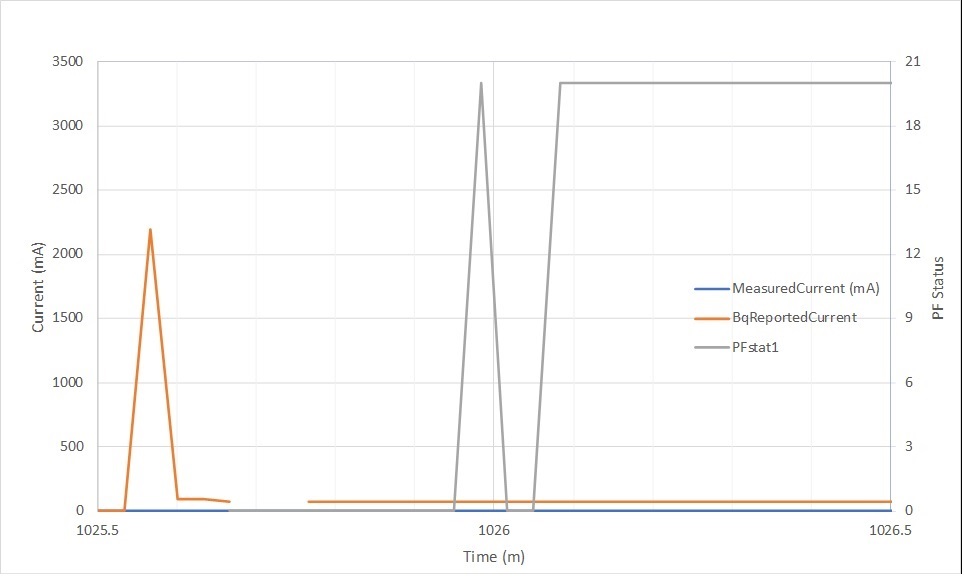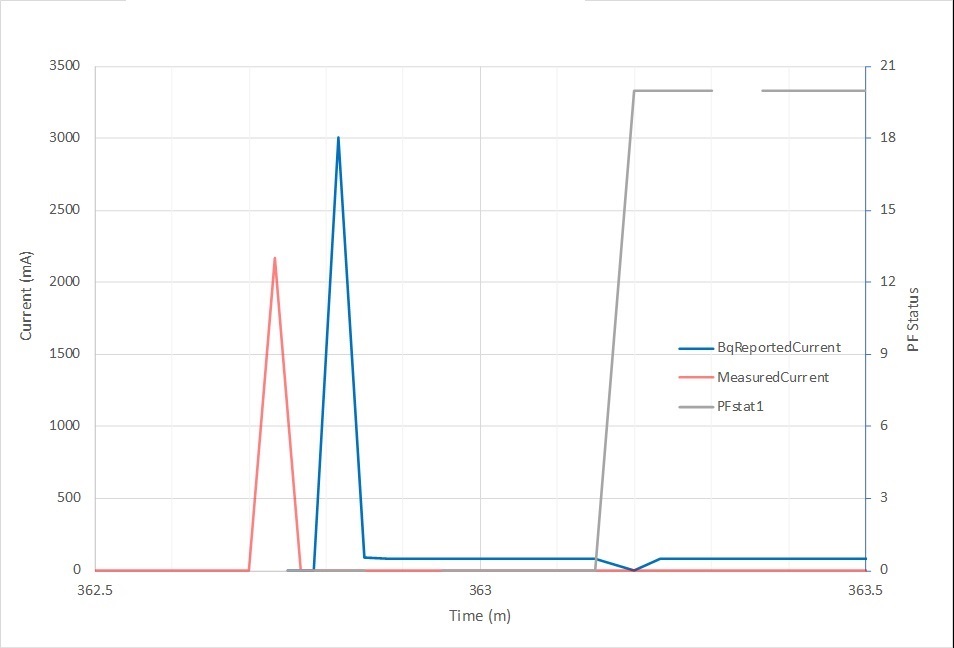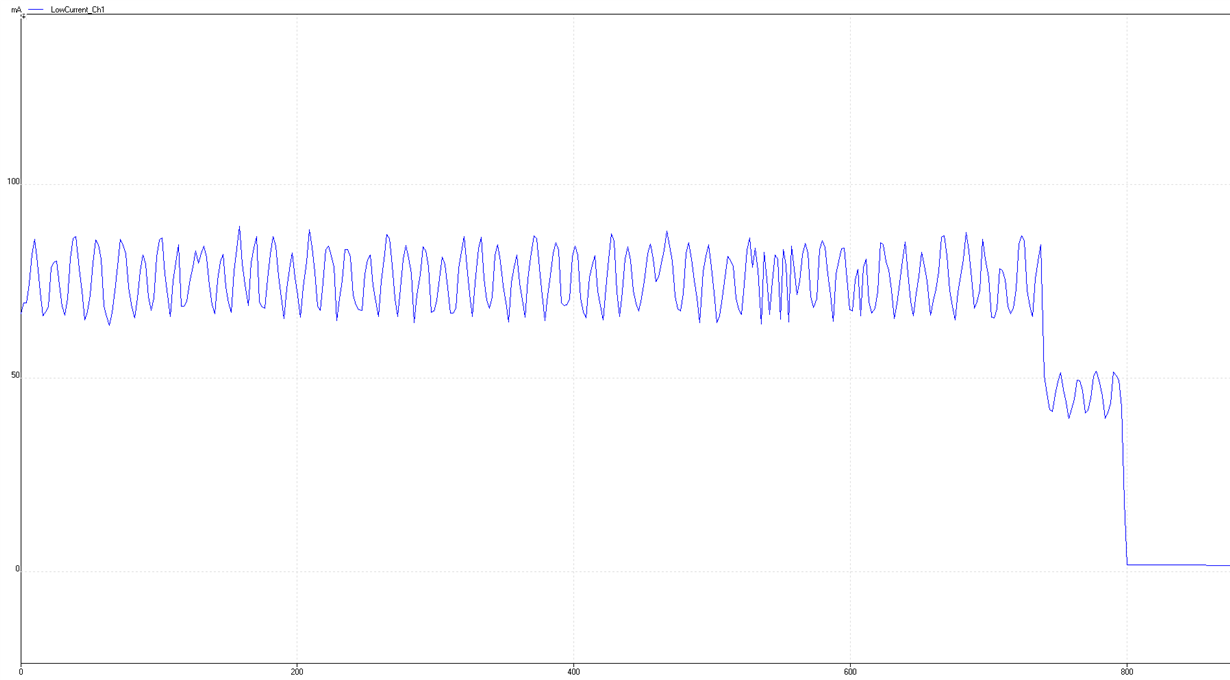Other Parts Discussed in Thread: EV2400
We under-charge some batteries in our product line. Some chargers do not communicate with our batteries and are over-charged due to the settings in the gg file. We were under the impression that when a full charge happens, the charge FET gets pulled (at some point) and no current can flow. It seems that the charge FET gets pulled and we get a CFETF permanent failure, even with a 20 second failure time.
How is current still flowing where we get this error?
Is there any way to prevent this failure?





